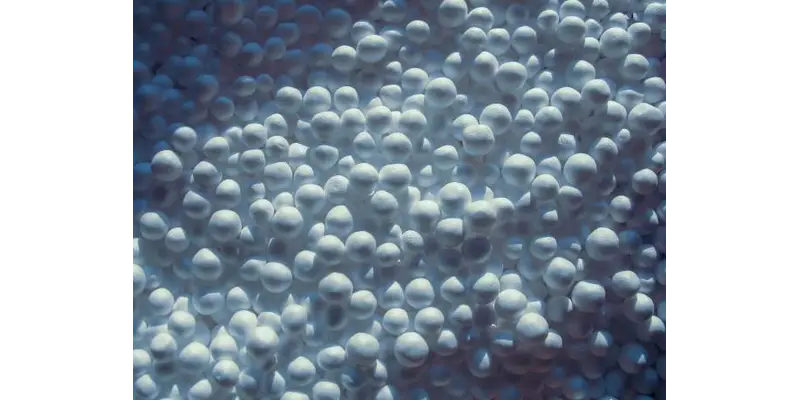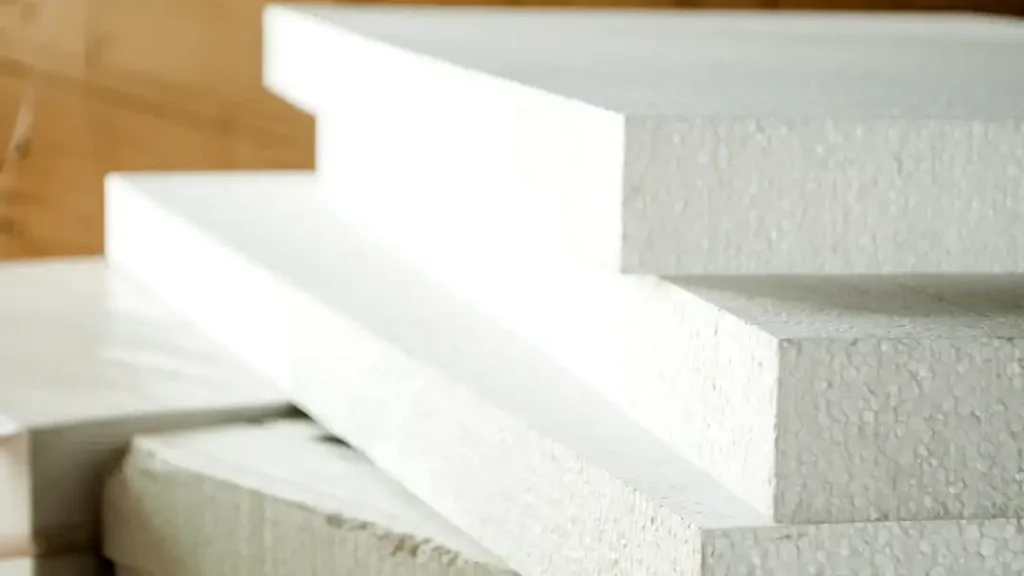Expanded Polystyrene (EPS) is a lightweight cellular plastic material that has become ubiquitous in various industries due to its versatility and cost-effectiveness.
In this article, we delve into the nature of EPS and explore whether it falls under the category of thermoplastics.
What Is Expanded Polystyrene

Expanded Polystyrene (EPS) is a lightweight, rigid, and versatile plastic material commonly used in a variety of applications. It is created from polystyrene, a polymer made from the monomer styrene, which is a liquid hydrocarbon derived from petroleum. The process involves expanding polystyrene beads through the application of heat and pressure, causing them to fuse together into a solid form with a cellular structure.
Key Characteristics of EPS:
- Lightweight: EPS is predominantly composed of air (about 98%), making it exceptionally light.
- Insulation Properties: It has excellent thermal insulation properties, making it ideal for use in building and construction.
- Shock Absorption: EPS is often used in packaging due to its ability to absorb impacts and protect delicate items.
- Buoyancy: The high air content also makes EPS highly buoyant, which is useful in flotation devices.
- Moisture Resistance: EPS does not absorb significant amounts of water, which enhances its durability and performance in various environments.
Common Uses of EPS:
- Packaging: Due to its shock-absorbing properties, EPS is widely used for packing fragile items such as electronics and appliances.
- Construction: EPS is used as an insulating material in walls, roofs, and foundations, contributing to energy efficiency in buildings.
- Food Service: EPS is used to make disposable coffee cups, food containers, and coolers due to its thermal insulation.
- Crafting and Model Making: Its ease of shaping and cutting makes EPS popular in model building and crafting.
- Safety Equipment: EPS is used in helmets and other protective gear for its lightweight and impact-absorbing properties.
What Is Thermoplastic?

A thermoplastic is a type of polymer that becomes soft and pliable when heated and solidifies when cooled. Unlike thermosetting plastics, which undergo irreversible chemical changes upon heating, thermoplastics can be melted and reshaped multiple times without significant degradation of their properties. This characteristic makes them highly versatile and suitable for a wide range of applications.
Key Characteristics of Thermoplastics:
- Reversible Melting: Thermoplastics soften when heated and regain their original properties upon cooling, allowing for repeated shaping and molding.
- Ease of Processing: They can be easily extruded, injection molded, or thermoformed into complex shapes and structures.
- Recyclability: Thermoplastics can be melted down and reprocessed multiple times, making them inherently recyclable.
- Transparency: Some thermoplastics, such as polycarbonate and acrylic, are transparent and exhibit excellent optical properties.
- Variety of Properties: Thermoplastics can range from flexible and elastomeric to rigid and high-strength, offering a wide spectrum of mechanical and chemical properties.
Common Examples of Thermoplastics:
- Polyethylene (PE): Widely used in packaging, pipes, and plastic bags due to its flexibility and chemical resistance.
- Polypropylene (PP): Used in automotive parts, medical devices, and packaging for its high chemical resistance and toughness.
- Polyvinyl Chloride (PVC): Used in construction, healthcare, and electronics for its durability, weather resistance, and electrical insulation properties.
- Polystyrene (PS): Found in packaging, disposable cups, and insulation materials due to its lightweight and thermal insulation properties.
- Acrylonitrile Butadiene Styrene (ABS): Used in 3D printing, automotive parts, and consumer goods for its strength, impact resistance, and ease of processing.
Applications of Thermoplastics:
- Packaging: Thermoplastics are widely used in food packaging, bottles, and containers due to their versatility and barrier properties.
- Automotive: They are used in interior and exterior components, such as dashboards, bumpers, and panels, for their lightweight and impact resistance.
- Construction: Thermoplastics find applications in pipes, insulation, roofing, and window profiles due to their durability and weather resistance.
- Medical: They are used in medical devices, implants, and packaging for their biocompatibility and sterilizability.
- Consumer Goods: Thermoplastics are used in electronics, appliances, toys, and furniture for their aesthetic appeal and functional properties.
Is Expanded Polystyrene a Thermoplastic

Expanded Polystyrene (EPS) is commonly classified as a thermoplastic, although some debate exists due to its unique cellular structure and manufacturing process.
Characteristics of Thermoplastics:
- Melting and Solidification: Thermoplastics soften when heated and solidify upon cooling, allowing for reshaping and remolding.
- Reusability: They can be melted and reshaped multiple times without significant degradation.
- Recyclability: Thermoplastics can undergo recycling processes to create new products, contributing to sustainability efforts.
Expanded Polystyrene (EPS):
EPS shares many characteristics with traditional thermoplastics:
- Softening with Heat: EPS softens when exposed to heat, allowing it to be molded into various shapes during manufacturing.
- Reusability: While EPS can undergo limited reshaping, its cellular structure may degrade with repeated heating and cooling cycles.
- Recycling: EPS can be recycled, although challenges exist due to its low density and the need for specialized equipment.
Expanded Polystyrene Vs Thermoplastic

Expanded Polystyrene (EPS) and thermoplastics share similarities in their properties and applications, but they also have distinct characteristics that set them apart.
Expanded Polystyrene (EPS):
- Cellular Structure: EPS is characterized by its lightweight, closed-cell foam structure, which provides excellent insulation properties.
- Limited Reusability: While EPS can be reshaped to some extent when heated, its cellular structure may degrade with repeated heating and cooling cycles.
- Recycling Challenges: EPS recycling faces challenges due to its low density and the need for specialized recycling facilities.
Thermoplastics:
- Versatility: Thermoplastics come in various forms, from flexible to rigid, and can be easily molded into complex shapes.
- Multiple Processing Cycles: They can be melted and reshaped multiple times without significant degradation, contributing to their recyclability.
- Widespread Applications: Thermoplastics find applications in industries ranging from packaging and automotive to construction and healthcare.
Comparison
| Feature | Expanded Polystyrene (EPS) | Thermoplastics |
|---|---|---|
| Structure | Closed-cell foam | Solid |
| Reusability | Limited | Multiple processing cycles |
| Recycling | Challenges due to low density | Widely recyclable |
| Applications | Packaging, insulation | Packaging, automotive, construction, healthcare |
Conclusion
While Expanded Polystyrene shares some properties with thermoplastics, such as softening with heat, its unique cellular structure and limited recyclability differentiate it. Understanding these differences is crucial for selecting the most suitable material for specific applications.
Are you looking to learn more about Expanded Polystyrene? Welcome to contact us at any time, and pleased to ask for the expanded polystyrene samples for your industry now.
